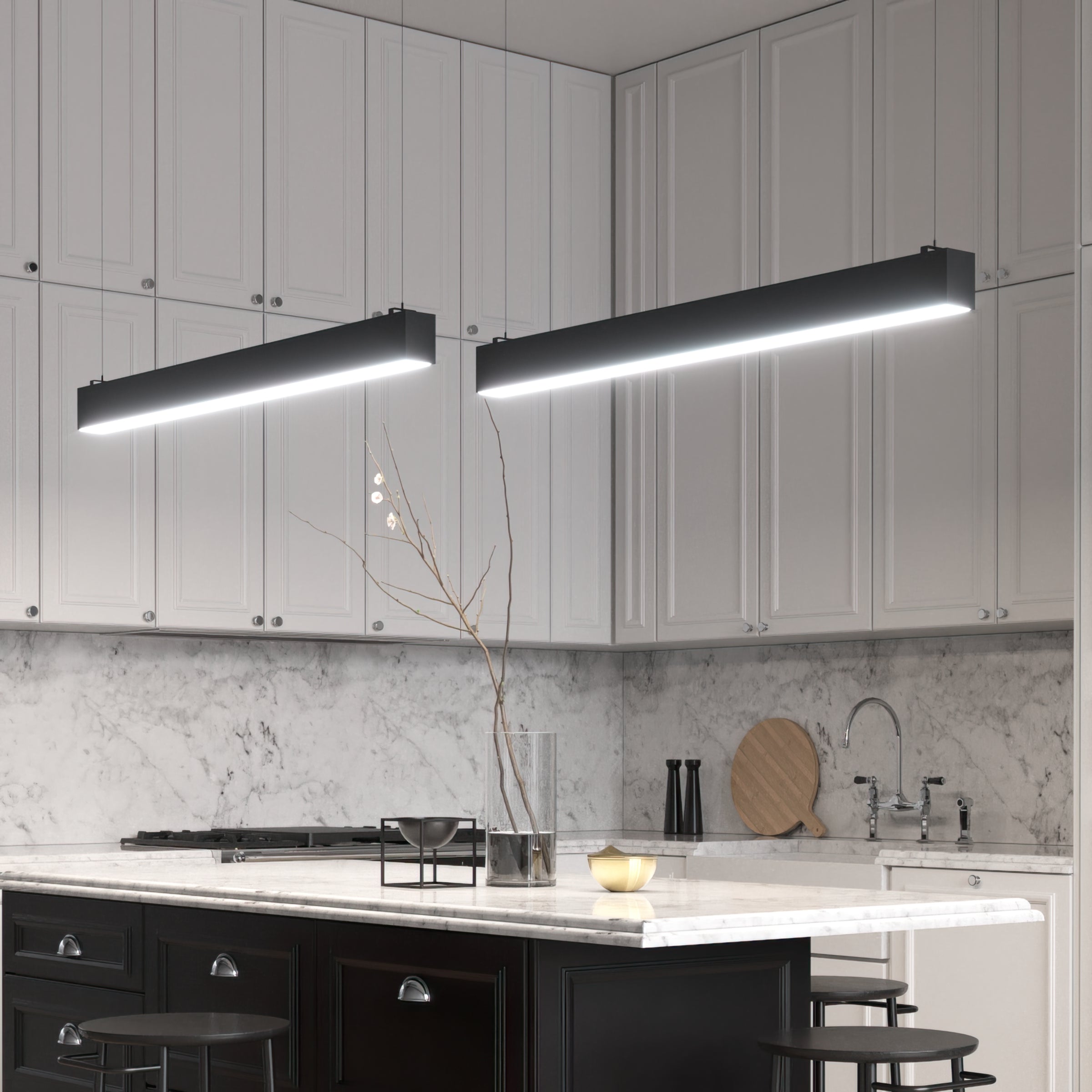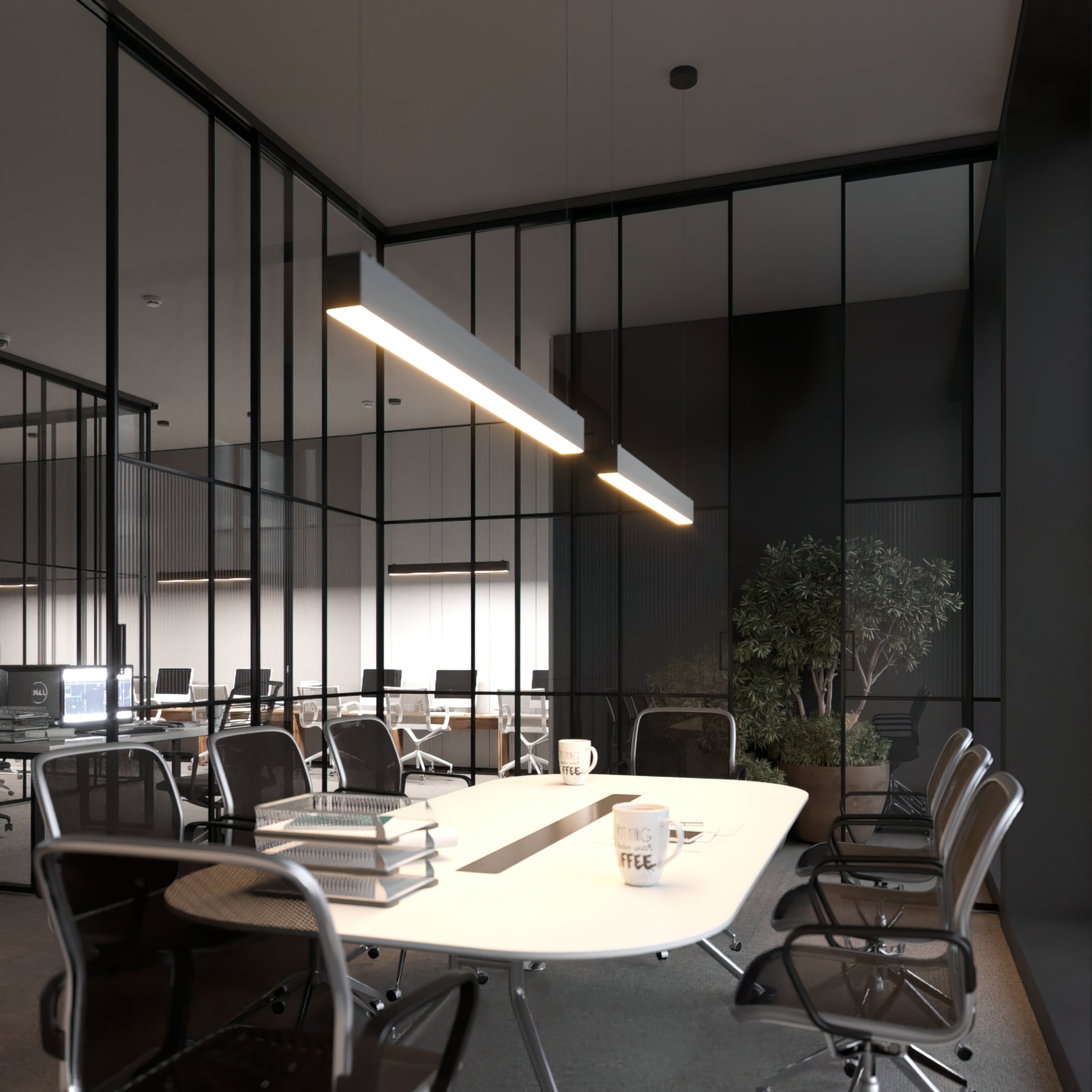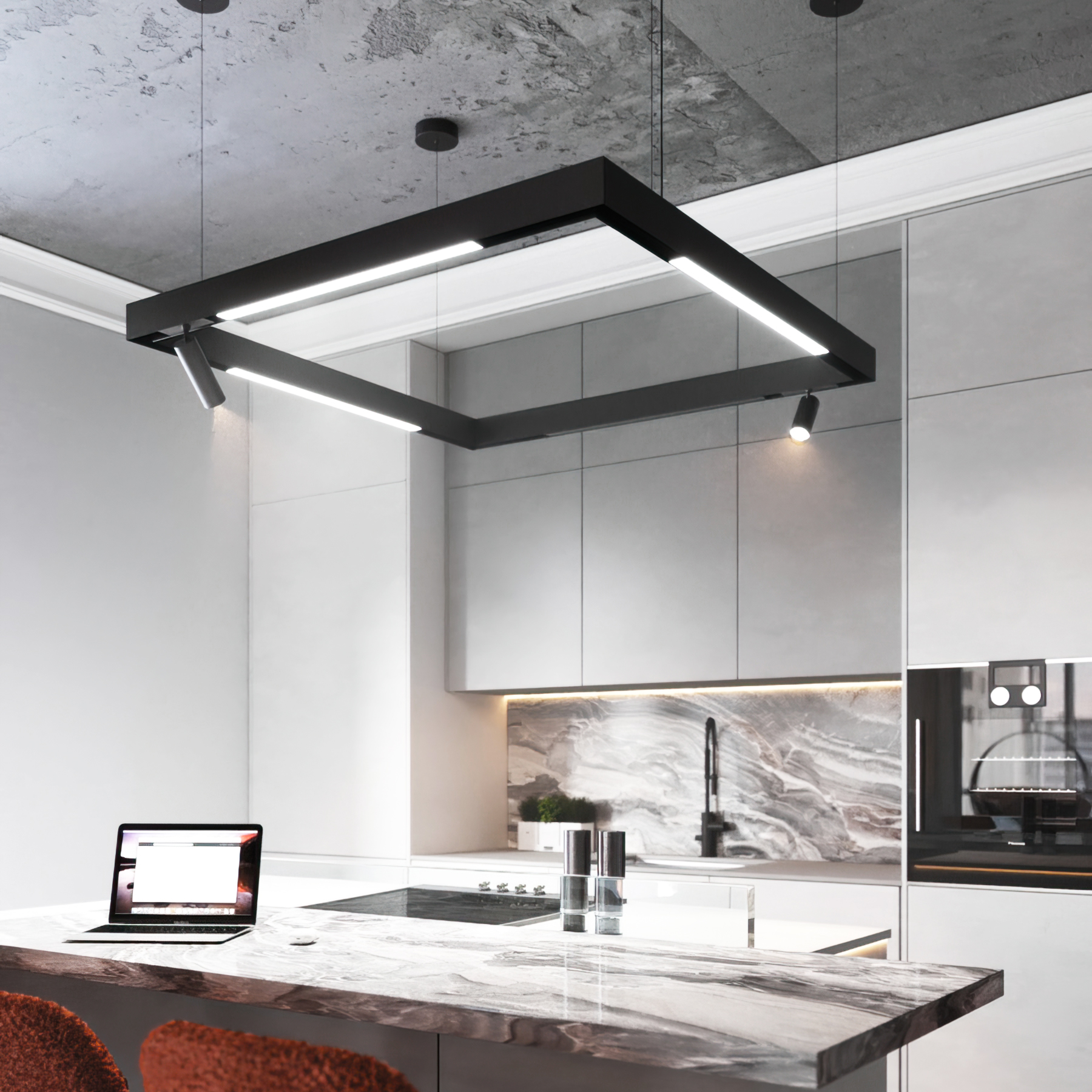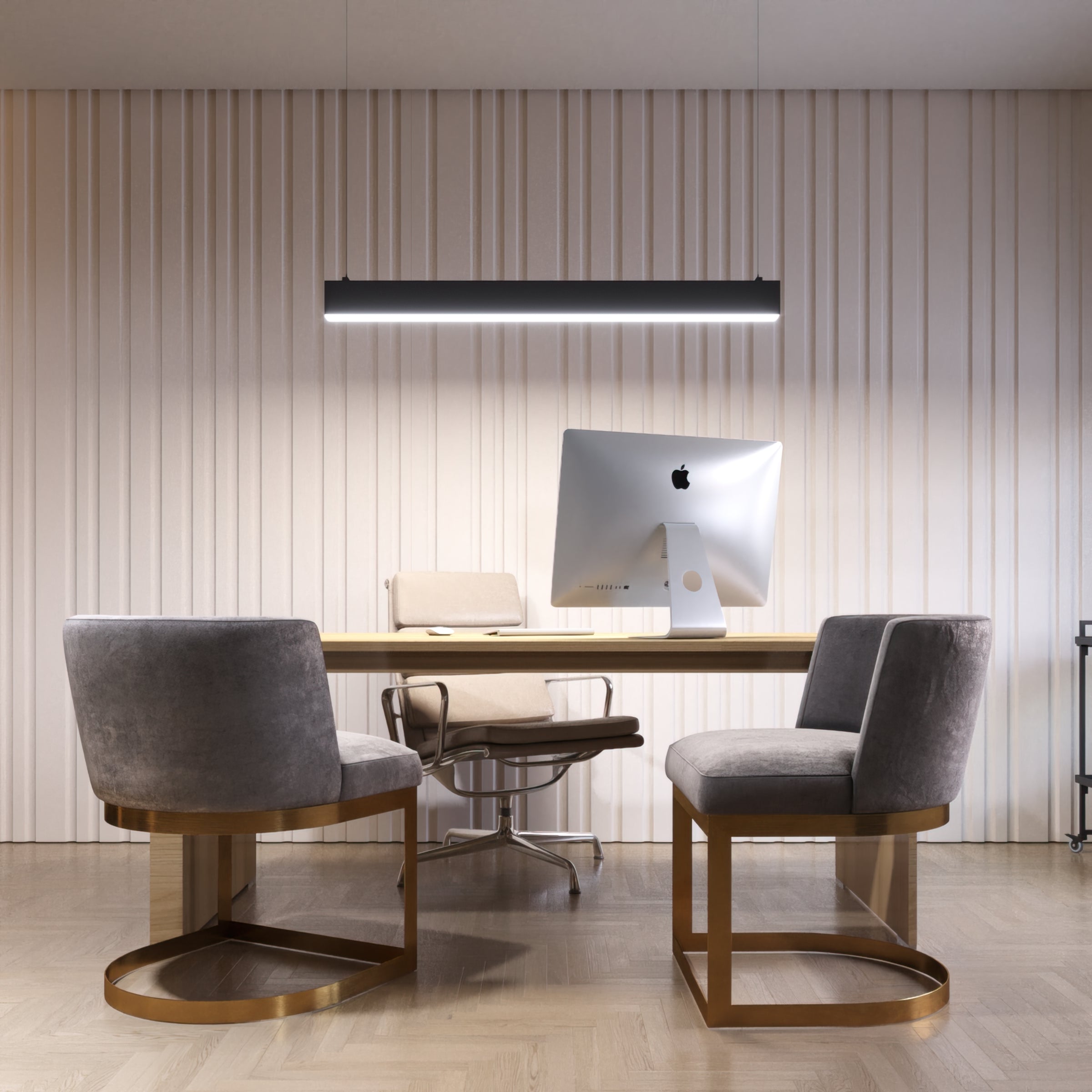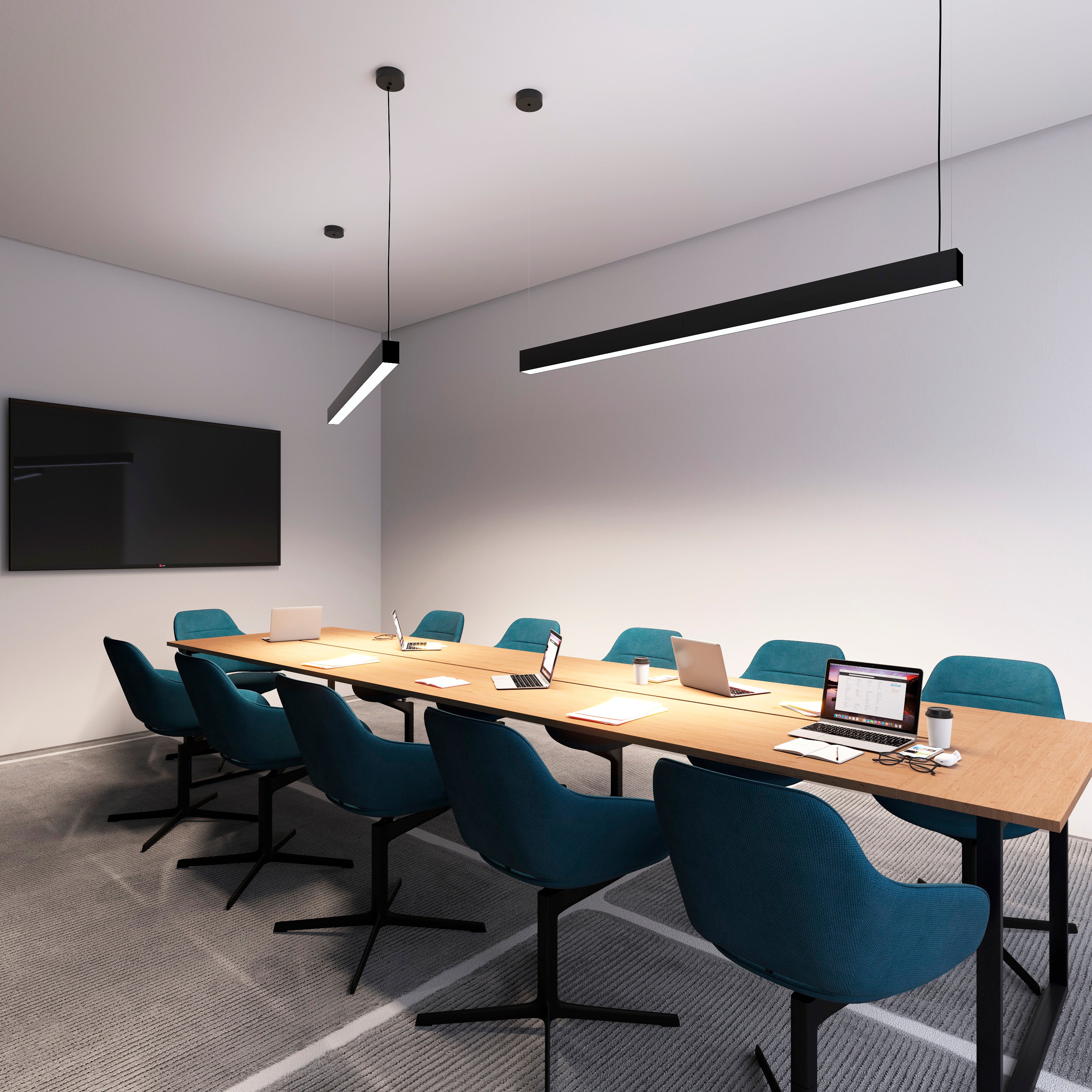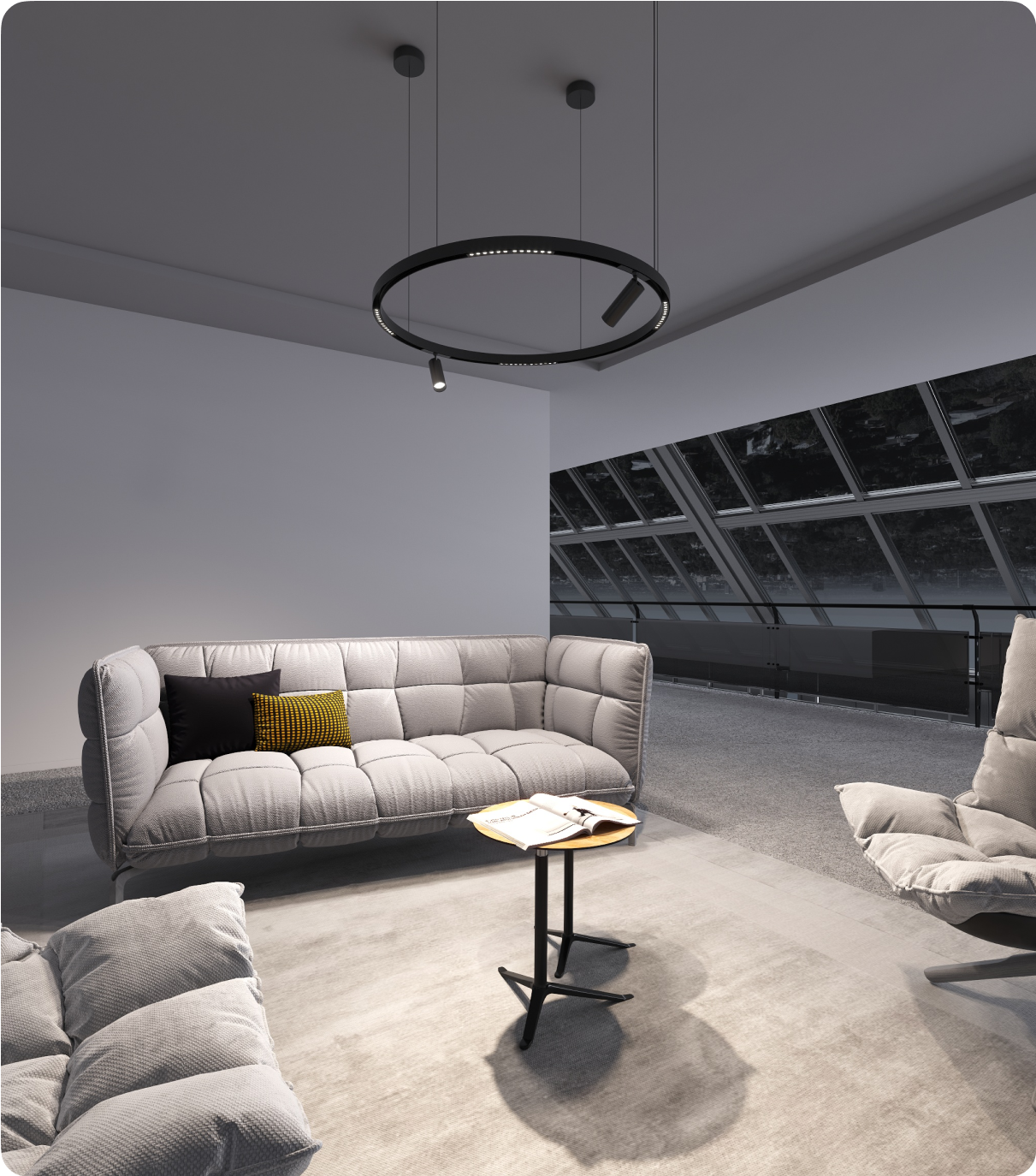What’s the one thing that can mess up your productivity at work? While skipping your morning coffee or having to deal with distractions are certainly valid culprits, there’s a lesser-known problem lurking in the shadows: bad office lighting. From harsh lighting that causes migraines to dim lighting that can strain your eyes, bad lighting can lower productivity and morale. It may seem simple, but an investment in proper lighting — no matter if you’re working at the office or from home — can completely transform your work life. But where to start? Explore some of our tips below to help pick out the right residential or commercial office lighting ideas for your work space.
Benefits of Using LED Office Lights
There are a number of options to choose from when it comes to types of lighting fixtures for home and office spaces. But with features ranging from versatility to timeless style, LED lights are often the best option. Other benefits of LED lights include:
1. Energy-Saving
LED lights use between 25- to 80-percent less energy than their counterparts which can help lower electricity costs — an especially helpful feature for large commercial spaces.
2. Long Lasting
With a lifespan 15 times as long as fluorescent and incandescent lighting, LED lighting is a dependable option that can continue to powerfully illuminate your office for years. Their endurance results in less frequent replacements saving both time and money.
3. Low Heat Production
Improper lighting can affect the temperature of an office, creating uncomfortable conditions while increasing the likelihood of hazards such as overheating. The low-voltage electrical systems used by LED lights fix this issue due to their low heat production.
4. High CRI Rating
LEDs have a high rating on the color rendering index (CRI), which means they are able to illuminate objects in their true color. This subtle difference has been shown to improve the overall ambience of an office by replicating natural light.
5. Bright
Not only are LEDs more energy-efficient, but also more powerful when it comes to their lumens. Lumens are used to measure the brightness of a bulb, unlike wattage which measures energy use. Higher lumens make it easy to light a large space effectively without as many fixtures.
6. Environmentally-Friendly and Safe
One of the most well-known benefits of LED lights are their positive effects on the environment. They are a more sustainable option as a result of their durability and low energy use. The lights also are made without the use of mercury resulting in higher levels of safety.
7. Modern Designs
Timeless, sophisticated, and modern — LED light fixtures can provide an elegant look for any home or commercial office. Their smaller size allows for innovative fixtures that can add a whole new life to a space that may have previously been bland.
8. Customizable
Traditional lights do not provide much room for customization. LED light fixtures can be adjusted to fit your needs by giving you the ability to control sensors, timers, dimming, and other components.
9. Versatile
With LEDs the possibilities are endless. Regardless of the style of your setting you can integrate LED fixtures that are sure to enhance the aesthetic aspect of your office and make it more inviting.

The Best LED Light Fixtures for the Office
There are countless ways in which you can include LED light fixtures in your office space. They vary in style and use with different fixtures that can be chosen depending on your specific taste and needs. Here are some of the best light fixtures for the office:
LED Linear Fixtures
With a unique symmetrical and asymmetrical linear design, LED linear fixtures utilize a contemporary style adding a bold sense of modernity to any setting. These fixtures are suspended in the air from durable cables attached to the ceiling. There are three types of linear fixtures: uplights, downlights, and bi-directional lights. Uplights have a broad beam spread perfect for large spaces and enriches the surrounding structure by “elevating” the ceiling. Downlights are more so used for task lighting on desks or workspaces. Bi-directional lights combine the two, illuminating the space in whole. No matter the type you choose, these can help add a new layer of depth and variation in the layout of your office space.

LED Round Ceiling Fixtures
Round ceiling fixtures are circular pendant lights that can be suspended or mounted from a ceiling or wall. The round fixture’s minimalist designs that incorporate smooth edges and a sleek, transparent appearance can improve the aura of your commercial or home office. They often come in many different sizes ranging from smaller options great for smaller spaces to larger, more powerful fixtures that can properly add illumination to your chosen room or area. It is usually advised to place your round ceiling lights between 28 to 36 inches above the targeted surface. The versatility of this fixture makes it simple to include as a complement to your existing architectural style.

LED Magnetic Track Fixtures
Magnetic track fixtures differ from others in that the light is installed on a track by a magnet on the fixture. This fixture type maximizes customization and adaptability because of their ability to be easily assembled and disassembled. With separate parts the track lighting can be connected with one another to create a variety of shapes. This unique feature makes this option perfect for spaces that may be somewhat out of the ordinary.

Other Features
LED desk lamps, sconces, wall lights, floor lamps, LED strips, and channels are all excellent options for bringing a modern touch to any office. LED desk lamps can provide direct lighting for a desk or workspace. They are available in a variety of styles and colors, making it easy to find the right lamp. Sconces are a stylish way to add a touch of elegance to any office. They provide soft, ambient light that can be used to create a cozy atmosphere. Wall lights add a dramatic touch. They can be used to highlight artwork or to cast a bit of extra light in a dark corner. Floor lamps are a great way to add a bit of height to your office. They provide a great source of light and can be used to create a focal point in any room. LED strips and channels can add a bit of color and texture to any office.

Office Lighting Design Tips
After selecting the fixtures you’d like to include in your office, it’s important to plan out how you are going to incorporate them in your existing space to have the best impact. Use some of our tips below to help you get ideas for your office lighting design:
1. Plan Ahead
Light fixtures and task lamps serve different purposes that should be taken into account when planning what to put where in your office. The choices you make to illuminate your space should match your personal preferences and what options will work best for the specific setting that you are working in. Placement is another factor that should be taken into consideration. Looking at the existing size and layout of the area can help you make a more informed decision about what to put where.
2. Utilize Natural Light
While the high CRI of LED lights will do a lot of the legwork in making your office space seem as though it is naturally illuminated, it is always an excellent decision to do what you can to maximize actual natural light flow. It is a good idea to place desks and other workspaces near windows and other sources of natural light while using the LED lighting to brighten up the spaces that are farther away.

3. Look for Multi-Functionality
Choosing lighting that is versatile and able to be customized can increase the overall functionality of your task lighting fixtures. Using lights that are able to be raised and lowered or mounted to different spots can make them even more helpful.
4. Combine Different Types of Lights
No office lighting solution is one size fits all. It takes a combination of different lights and fixtures working together to have an office that is welcoming and comfortable. Take a look at each part of your space to see what type of lighting would be most appropriate. Lamps can be used for things like desks while pendant lights or linear lighting will be better suited for general room lighting. Another tip to achieve cool office lighting is to blend different styles and designs that can add variation to the aesthetics of your office.

5. Cut the Wires
Wired lights can often be a nuisance. They make it more difficult to alter your fixtures once they have been installed and can hamper the otherwise sophisticated look of your LED lights. Choosing wireless desk lamps, wall sconces, and other features can help keep your space clean.
6. Don’t Overdo It
Especially when it comes to small offices, lighting fixtures that are overwhelming can be distracting and hinder your ability to work comfortably. Opt for low profile fixtures that can still improve the look and feel of your area without taking away from the available space.

7. Consider Color Temperature
One of the biggest downsides of improper lighting in the office is the strain it can put on your eyes when reading or looking at a screen. An easy way to combat this is by picking lights with a low rating on the Kelvin scale (2700K – 3000K).
8. Find Ideal Brightness
Your lighting should certainly be bright, but not at an intensity where it becomes overpowering. Overlighting can create glares that can sometimes even cause eye pain and headaches. An easy way to calculate the lumens you’ll need for the lighting in your office is multiplying the room square footage by the lux to determine how many bulbs you’ll need before dividing that number of lumens by the lumens in each bulb.
9. Install a Pendant Light Above the Meeting Area
Your office’s meeting area is a place that should make a statement. It is a room that should be valued and pleasing for the people working there. A fantastic way to accomplish this goal while doubling as an effective way at providing full illumination is by installing a pendant ceiling light above your meeting area. Experiment with the height of the fixture to see what works best for you.

10. Watch for Shadows and Glares
Glares and shadows are two problems that can easily be avoided with a little planning. Before installing your lighting fixtures or making choices on where you’d like them to be, take note of where the shadows and glares that already exist are in your office. Once you have located these places, try to add balance to the beams with table lamps to fix flares or use adjustable/movable lamps to prevent shadows.
11. Use LED Strips
Even if you don’t have the ability to make major modifications or add large fixtures to your office, you can still add to the ambience of the space with LED strips. These can be placed behind monitors, cabinets, and other office furniture to create soft lighting.

